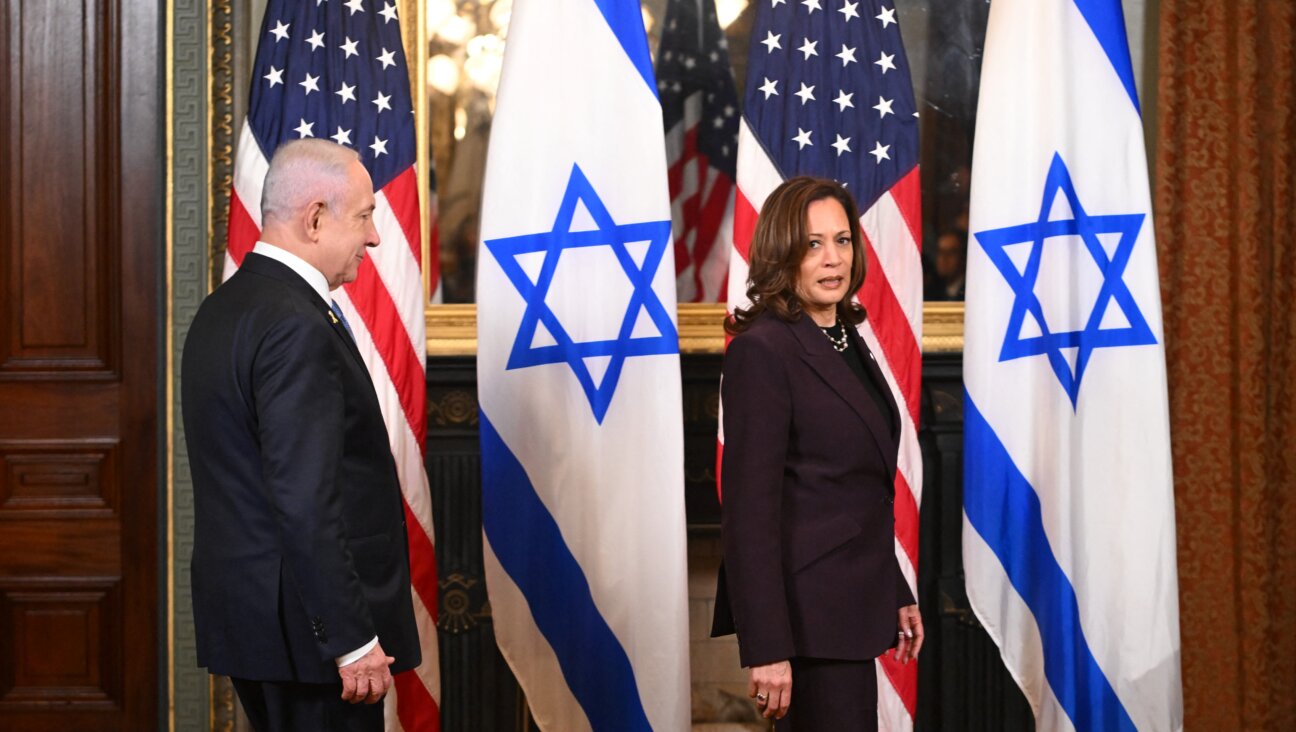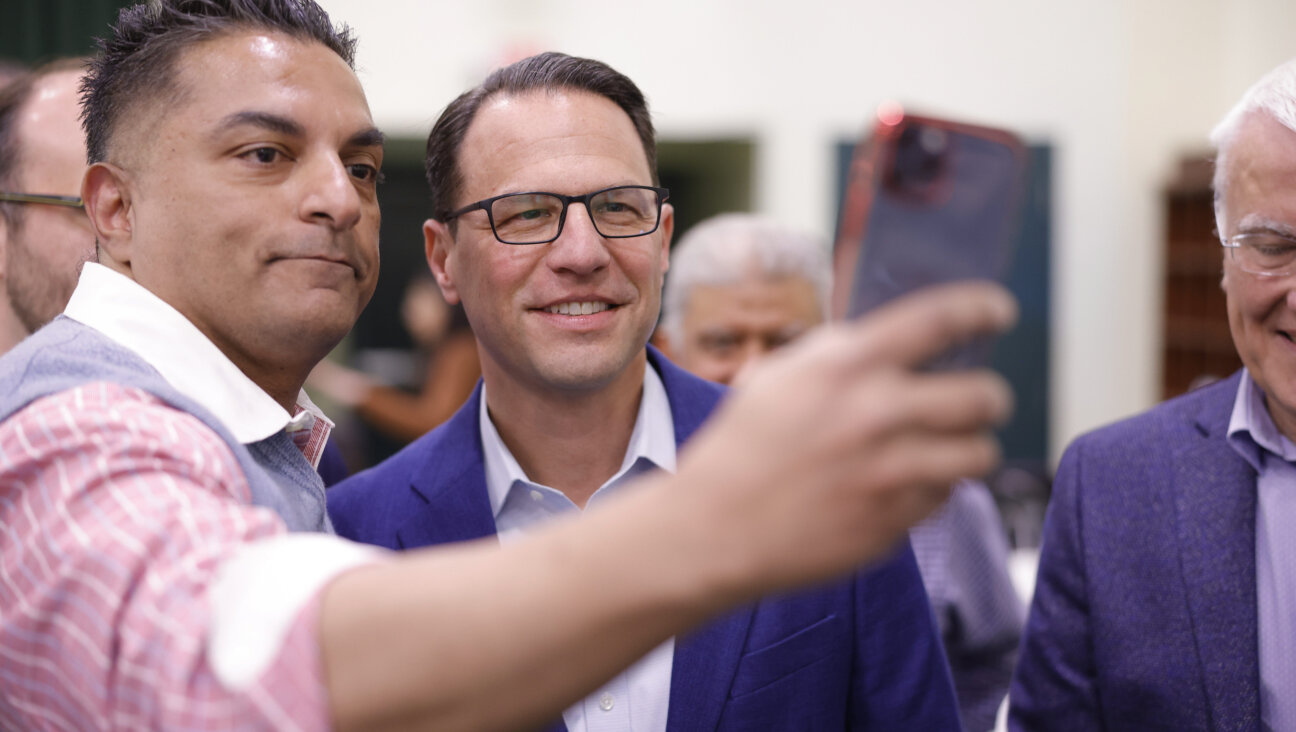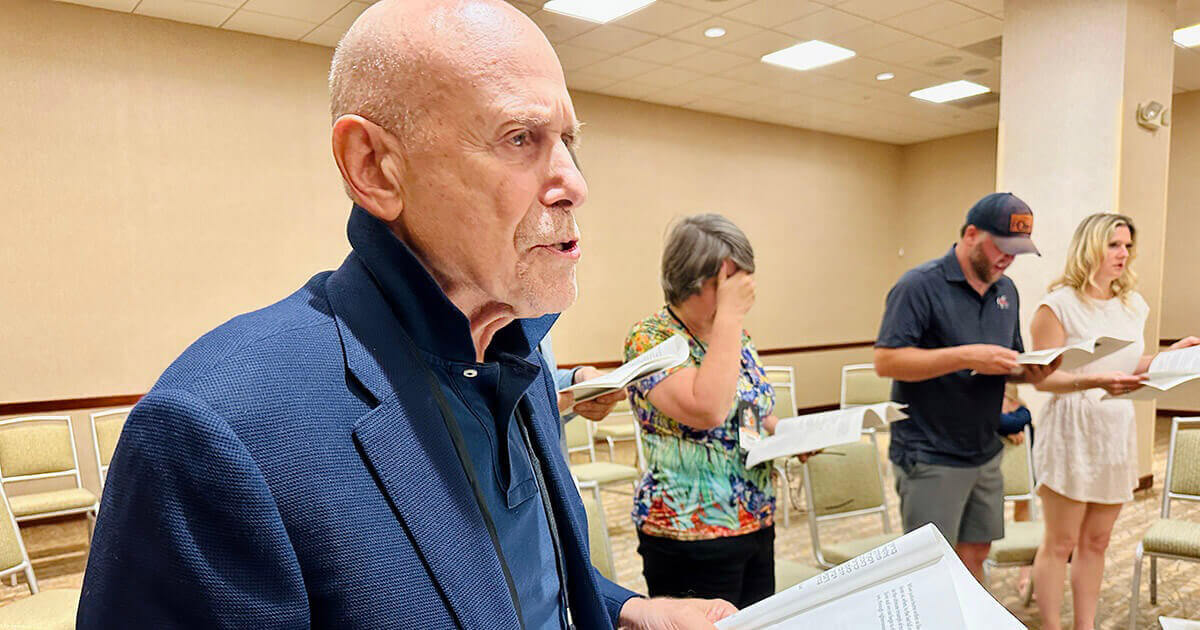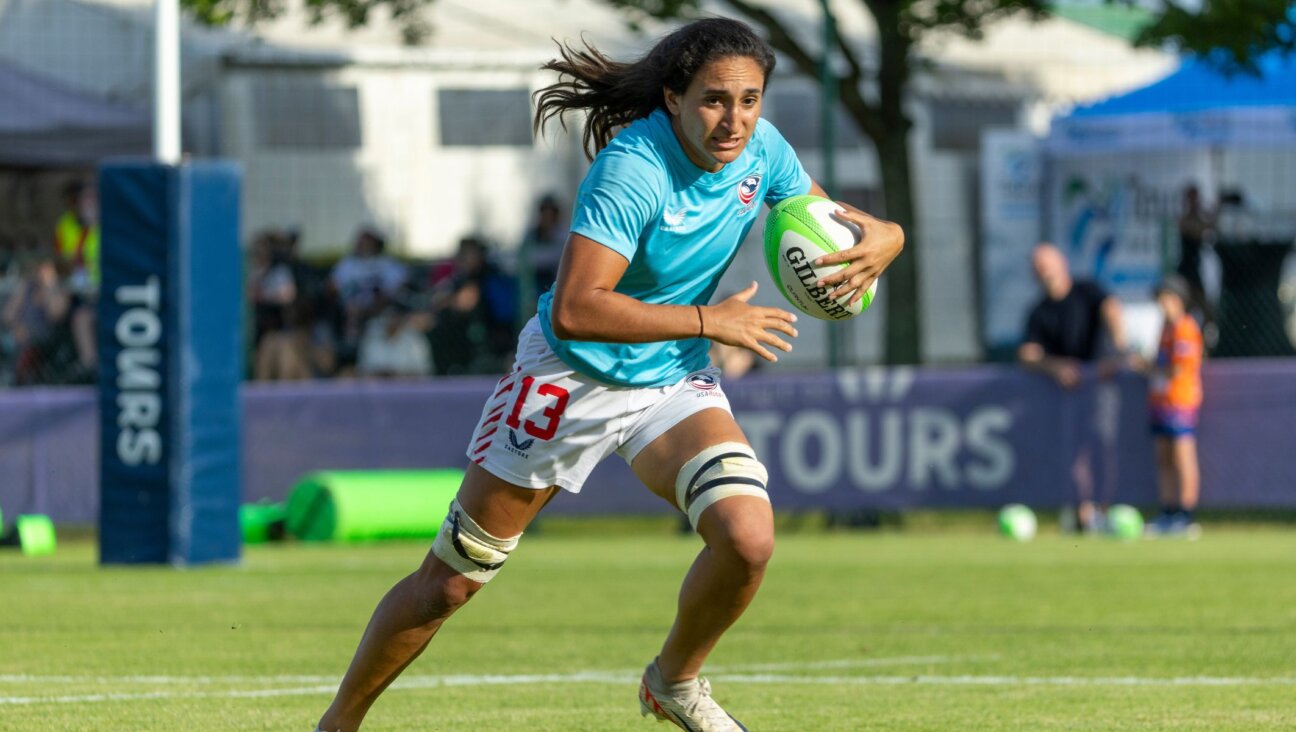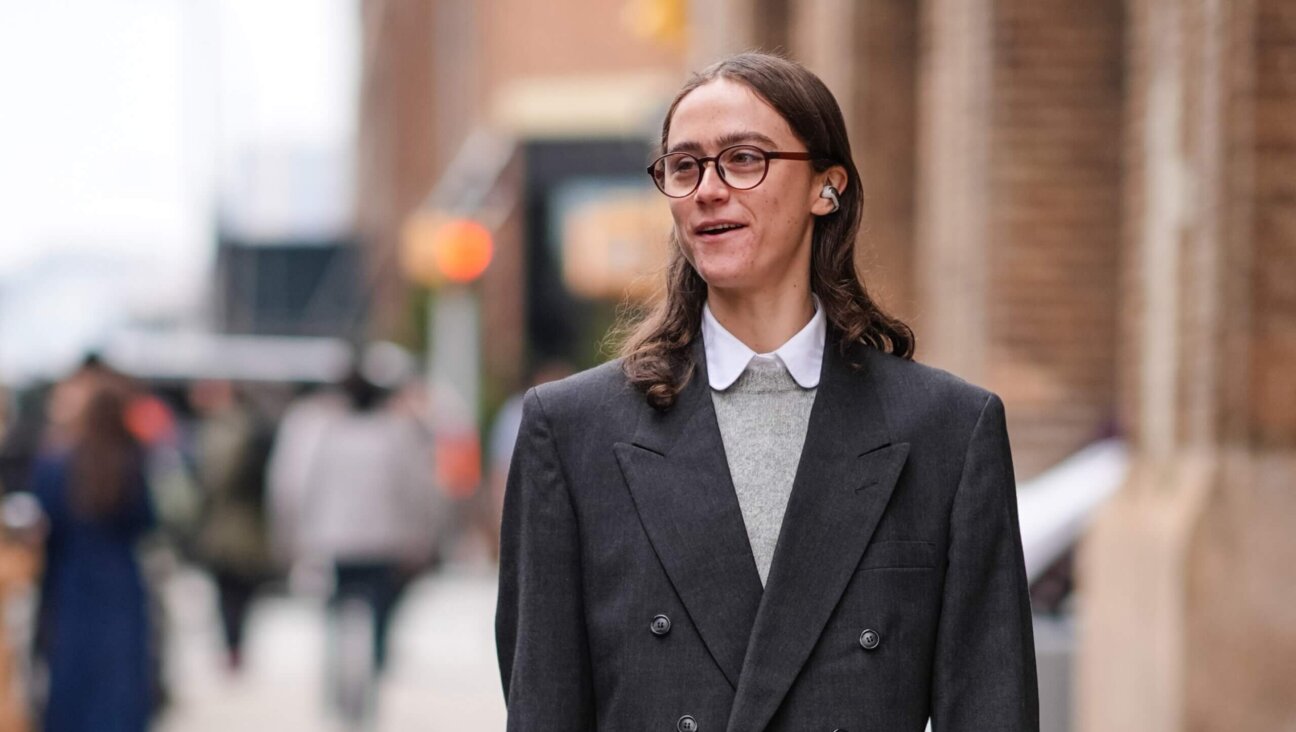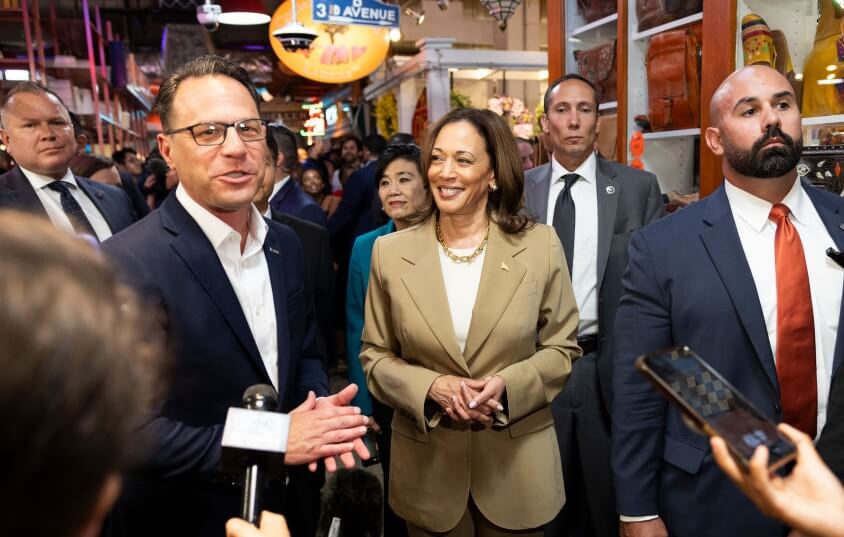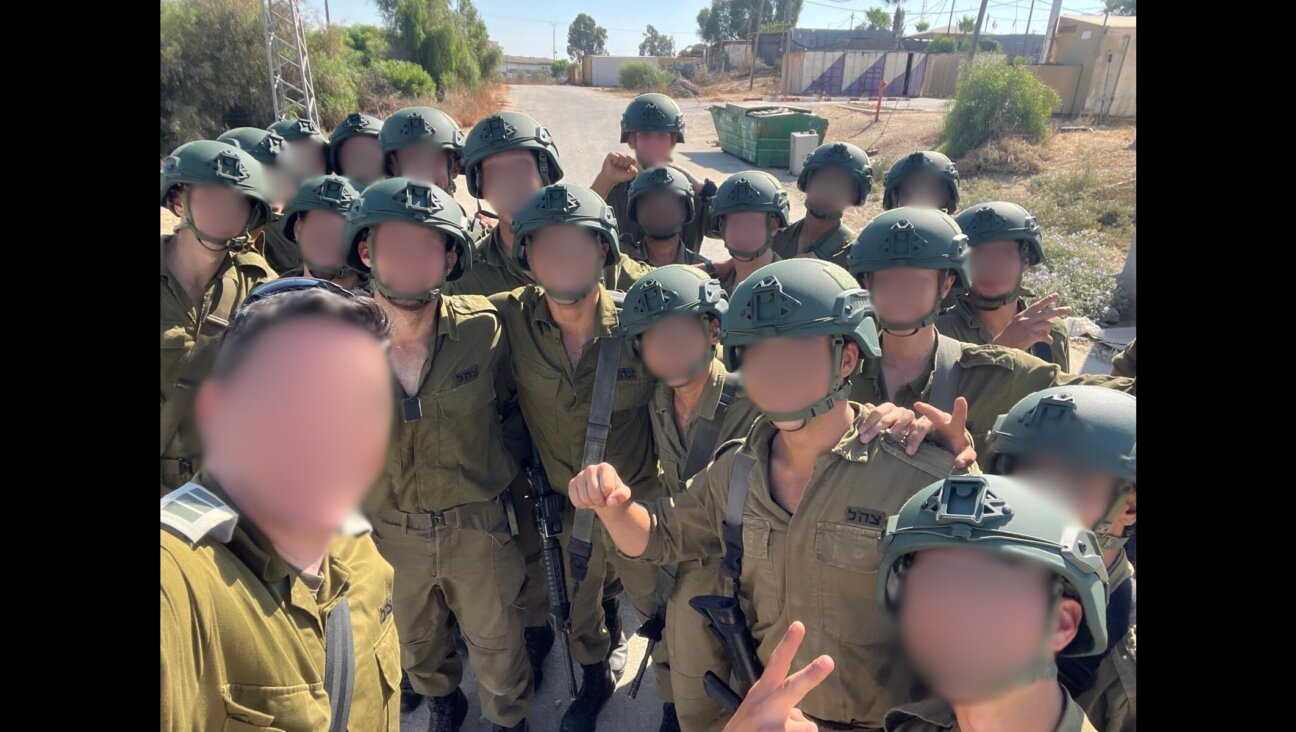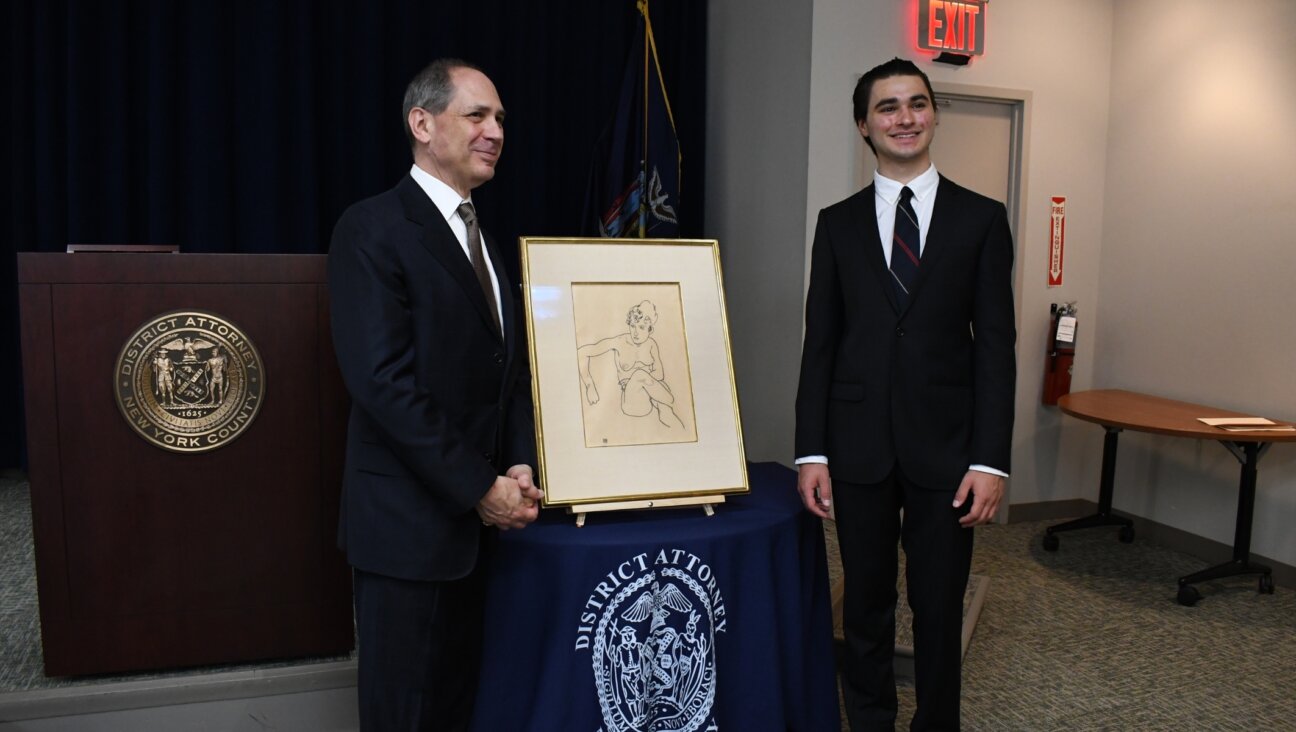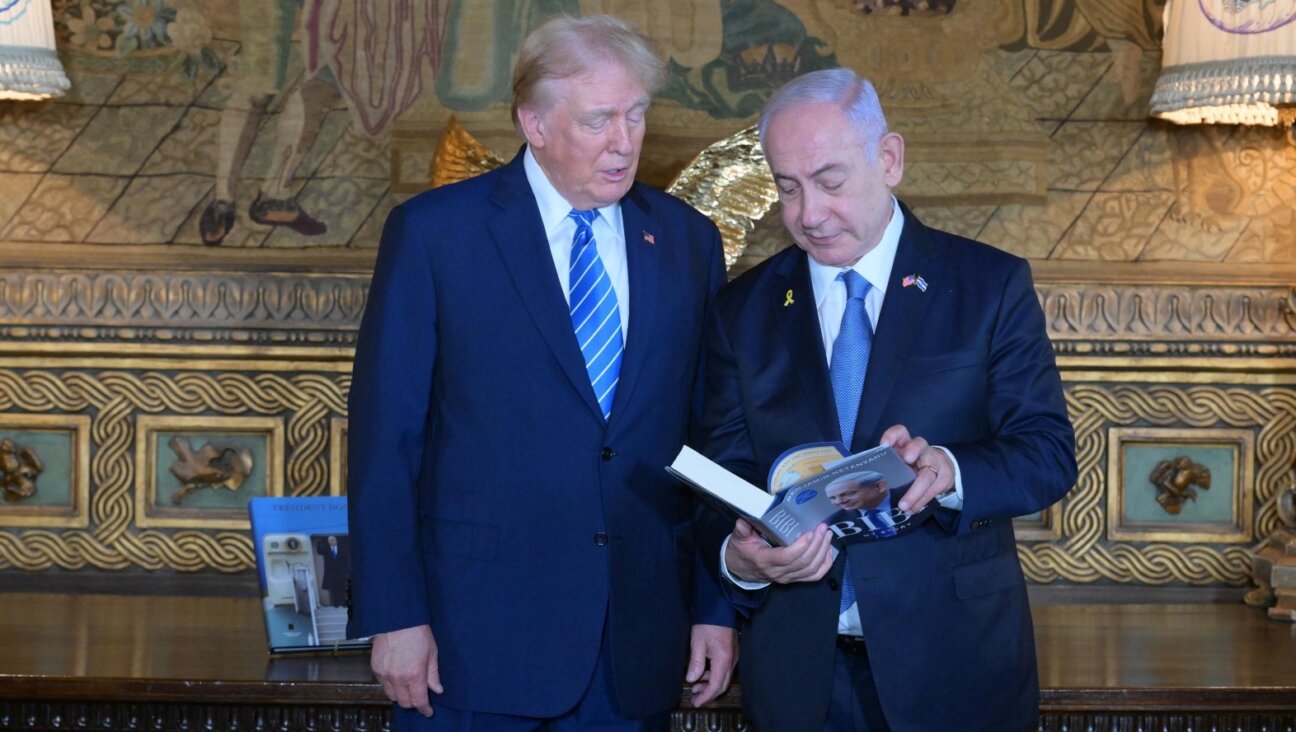The outbreak started in a New Rochelle shul. A year later, a look at that community.

Sandra Schoenbach Weinstein gets a coronavirus test in New Rochelle last March
I forgot to go outside at 7 p.m. on Wednesday to clap.
Honestly, until I got the email from New Rochelle City Hall a few days earlier outlining plans to mark the one-year anniversary of COVID-19 arriving in our town, I had forgotten about the clapping altogether.
It feels like it was all so long ago: the nightly clapping for nurses and doctors on the front lines, some wearing garbage bags for the lack of PPE; opening our windows and ringing bells to create moments of solidarity within our new isolation; the hopeless hunt for toilet paper, hand sanitizer and grocery-delivery slots.
It’s March again. In like a lion, out like a lamb, just like every other year. But we all know why this March is different, especially here in New Rochelle, “ground zero” for the coronavirus outbreak in the New York area. Last March — when our community made headlines as the first in the nation to have a containment zone declared for a square mile around the Young Israel synagogue — felt like it lasted 1,000 years.
For Sandra Schoenbach Weinstein and her husband, Uri, this week marked a year since their COVID-19 diagnoses. When I spoke with her the other day, Weinstein recalled how her relatives and friends on Long Island were making plans for Purim costumes and hamantashen fillings while people in hazmat suits knocked on doors in her New Rochelle neighborhood, swabbing every nose in each house.

Sandra Schoenbach Weinstein gets a coronavirus test in New Rochelle last March
“It’s been a year — A YEAR!” marveled Weinstein, a dentist and member of Young Israel. “And I have family that got diagnosed just last week – it’s still happening! A year!”
Just as New Rochelle had a head start on the art of social distancing, we are now perhaps early to immerse in the reflection that accompanies an anniversary. Like so many others, my neighbors and I are working through the grief and anguish that the global pandemic has wrought – more than 500,000 deaths and counting – but also the resilience and strength that has remained at the forefront of our community.
The synagogue where it started
A year ago, Weinstein was among the 1,000 members of her synagogue, which is Modern Orthodox, to go into quarantine while the rest of the country was still commuting to offices and attending in-person school. More than 100 of them tested positive in those early days; remarkably, only one member of Young Israel died of COVID all year, according to Mark Semer, a past president of the synagogue.
Just as they’d been the first cluster diagnosed, Young Israel congregants were the first group to recover. Once Weinstein and her friends were symptom-free for 14 days, they got busy finding a way forward. They mobilized their antibodies, donating blood for research at Albert Einstein College of Medicine and Montefiore Medical Center that laid the foundation for understanding how convalescent plasma therapy might work.
“Now that I’m out of quarantine,” Weinstein told a reporter for USA Today at the time, “it’s time to save people.”
I remember reading Weinstein’s statement last March: it hit me hard, made me cry. Coronavirus had plunged New Rochelle into a swamp of fear and worry (the Daily News dubbed us “NEW ROCH-HELL”), feelings that Gov. Andrew Cuomo only exacerbated when he sent in the National Guard to coordinate food distribution and do heavy cleaning. His ‘containment zone’ included my daughter’s middle school.

The author’s hometown became a media focal point — and the butt of jokes.
But Weinstein? She got out of the swamp. “When you’re closed in, and you feel like pariah, and other communities aren’t shut in,” she said, looking back, “you have to shift from ‘Why did we get sick?’ to something along the lines of, ‘Well, now we can do something!’”
The pandemic brought out her inner science geek. Weinstein, who still tests positive for antibodies, takes a lot of pride in the fact that some of the earliest medical data on the virus came from the blood drive in the parking lot of her synagogue.
And, after donating blood, she and her neighbors, still under court-ordered quarantine, created a WhatsApp group where a few hundred people exchanged information about their symptoms.
“I got headaches – it was dismissed,” she recalled. “‘That’s not a symptom,’ they told me. But it was a symptom. Then I lost my sense of taste and smell, so I contacted an immunologist in Albany I had read about and said, ‘We have this group, we have data!’
The Mayor of Ground Zero
As the medical community put that data to use, New Rochelle settled into a version of the new normal that soon saturated the country. Mayor Noam Bramson, whose daily robo-calls provided both information and comfort, found himself thrust into a national media spotlight, with news outlets like CNN, ABC and MSNBC asking for his input as clusters began to emerge in other communities.

Mayor Noam Bramson on MSNBC last March Courtesy of Noam Bramson
“It was a surreal experience,” he told me this week. “I was very much aware of the limits of my knowledge and the uncertainties of the situation we were confronting and yet I also wanted to model the behavior that I was asking of residents, and that meant maintaining a calm and composed disposition. “
Without a local public-health apparatus, it was the county and state governments that made the critical policy determinations affecting our town. Bramson said he saw his role as one that centered on communication – both internally to city residents, and externally to convey New Rochelle’s story.
“New Rochelle’s time as an outlier was fairly brief – it was only a matter of weeks before we became a typical community,” he recalled. “In those early days, there was an unfair stigma that portrayed the community as plague-ridden, which had serious implications: refusal of deliveries, home health aides cancelling appointments. Our repeated communications set the record straight, and the county, for its part, followed up with businesses and companies who misinterpreted the situation.”
Oh, I remember that stigma: in the earliest days, before even the school closed, a camp friend of my daughter refused to stop by because her mother said it was illegal to drive into New Rochelle.
“I hope we won’t always be known for this,” Weinstein said, and I certainly agree. “The reason we all got it is because we are so community-based – very social, keeping Jewish traditions, so we got sick.
“But I would never trade that to avoid getting sick,” she added, referring to a life of religious observance, “for all the other great things it offers.”
But New Rochelle remains cautious. In-person services have not fully resumed at Young Israel, and the public school district remains largely remote. While some of our elementary students now have in-person instruction four days a week, I need only two hands to count the number of times my daughter, an eighth grader, has been in an actual classroom this academic year.
The social isolation, we know, can have devastating effects, perhaps especially in terms of the rituals we count on, and the occasions we look forward to.
The car parades and the challah
My daughter, Hannah, became bat mitzvah in our dining room in May.
When we sent the turquoise and sparkly silver invitations out at the end of February 2020, the possibility of the virus shutting anything down — especially 10 weeks in the future — seemed absurd. But as soon as Cuomo’s containment zone emerged, the response-cards stopped coming.
We needed a Plan B, and we were not alone.
Many of our friends decided to postpone their mitzvahs: one optimistically aimed for Memorial Day (nope), another for Labor Day (nope), and a third picked Columbus Day, which seemed such a safe bet at the time (nope).
Emelia Freedenberg’s family decided to go virtual in the 12th hour. Emelia was slated to ascend the bimah at Temple Israel of New Rochelle, where my family also belongs, on April 4. It was clear by mid-March there would be no party, but the Freedenbergs kept hoping the circumstances might change to allow the service to take place in the sanctuary. With less than a week to go, they had to pivot.
“We hardly knew what to expect, but since she had been studying for months and was prepared, we decided to go for it,” Emelia’s mother, Tracy, recalled in a recent interview. “We had debated whether to stay in athleisure, but we opted to put on the formal clothes we had bought for the synagogue, minus our footwear, which was slippers.”
Instead of a bimah, they used a music stand and an itty-bitty book light. Instead of a challah, they pinch-hit with a hamburger bun. “Thankfully,” Tracy said, “it was a fancy one with a swirly top.”
The celebratory car parade that followed was the first one I took part in.
“It was so moving with what our town had been through, what the country was starting to go through, and what our family had just been through,” Tracy recalled. “Emelia was completely shocked to see her temple peers, friends from school, parents, cowbells, bullhorns, signs. It was just incredible to feel supported in that way, and so affirming that we were all in it — all of it – together.”
As the pandemic stretched on, of course, the parades got fancier — with lawn signs, photographers, party favors. “I loved Emelia’s primitive version,” her mom said. “It was so meaningful and really got to the heart of what it was all about: Emelia’s accomplishment and community.”

The author decided to bake fresh challah for her friends’ Zoom Mitzvahs
Masking up to proof the yeast and braid the loaves felt like a small but significant way to keep our cohort linked together, delivering each one with a hearty “Mazel Tov” to the family on the eve of the big day.
The party dress without the party
I asked our rabbi, Scott Weiner — who is also the husband of my best friend and the father of one of my Hannah’s best friends — what it was like to make this shift, to figure out how to make the most of Zoom as the medium for these milestones.

“Like Jews have always done, we had to adapt to retain what was most important and survive at the same time,” he told me. “In those first few weeks, moments like having a bat mitzvah at home seemed alien to us. But we saw how moving and special they could actually be – intimate, loving, and heartwarming.
“It was moving to deliver a Torah to a family’s home and to see how each family treated this most revered sacred object, which was meant to be the centerpiece of the bat mitzvah all along,” Weiner continued. “For years, we had symbolically passed the Torah through the generations in the pulpit. Now, we were doing it for real and no one who experienced it will ever be the same.”
My daughter agreed.

The author, her husband and their daughter, Hannah, who became Bat Mitzvah in their dining room last May.
Like everything else, Hannah’s years of Hebrew study and months of Torah practice changed course with our increasing understanding of the virus. The “few weeks” that so many originally predicted for social distancing turned into something much longer term and far more devastating, filled with measures that went well beyond any “abundance of caution” and depths of grief so profound we almost cannot describe them.

Hannah, in her party dress Photo by Amy Bass
In early October, my daughter decided to turn her postponed bat-mitzvah party into a cancelled one, and told me she was sorry she never got to wear her party dress. So put it on, I told her, and in the gorgeous autumn light that permeates the golden hour at the end of each day, I took a series of terribly unprofessional photos of her in that sparkly dress — espresso, the woman at the store told us when we asked how to describe the color.
It was, I have no doubt, the last time she will put it on.
The community united, and divided
In New Rochelle, we’ve been making these kinds of adjustments a little bit longer than most everyone else, understanding that just as COVID put a spotlight on all of the fractures in a community – the digital divide in education, food insecurity, the gig economy – it also made us acutely aware of even the smallest of our community gifts.
“Nobody was prepared for COVID,” noted Mark Semer, a past president of Young Israel.
“What we were prepared for is that we are a kind and caring and giving community – it is what we do,” he added. “If there was any way to prepare for COVID, it was the decades of being part of this community.”
Semer said Young Israel had become the epicenter of the original outbreak “for all the best reasons,” referring, like Weinstein had, to the way Orthodox Jews gather regularly and in-person, for so many reasons. In the weeks before the first case was discovered, he noted, there had been daily services, classes, three or four bnei mitzvah, a big fundraiser and “a funeral where I paid a final respect to an important man.”
“Why did it spread here? Because of a vibrant, active community,” he explained. “So it spread around.”
Once COVID struck, the very values that had led to its spread helped contain it and support the most vulnerable through it. “We followed every directive to a tee: state, county, city, federal – we took it very seriously, closed the building, nothing indoors or outdoors until the rules allowed in June,” Semer said. “We had to get two negative tests in a moment when there were no tests – and then we got to work.”
New Rochelle’s COVID numbers have been on the same roller coaster as most other communities. There was another spike in infections in November, leading to portions of two of the city’s ZIP codes – 10801 and 10805 – to be labeled “yellow” zones subject to more restrictions on gatherings than “green” areas with lower positivity rates.
Mayor Bramson said that reflected how the coronavirus had spread from the leafy wide streets of the north end of the city, near Young Israel, to the more urban and densely settled neighborhoods in the south, paralleling the racial and economic divides in COVID rates, deaths and now vaccine distributions.
The “yellow” label came shortly after our schools were finally up and running after an extended – and frustrating – delay. We had missed the fall months, when it would still have been warm enough to leave school windows open and have lunch outside, and the opportunity to start the year building student-teacher relationships in person.
Just two days after my daughter made her classroom debut at the end of October, we got a quarantine notice: her teacher had tested positive. This would be the beginning of one day in, several days — or, sometimes, weeks — out, as finding teacher coverage for classes became more difficult and quarantine notices continued.

The author, Amy Bass Courtesy of Amy Bass
We notice things like sunsets a lot more these days. Our outdoor life has continued, even into the colder months, lighting fires and wearing an absurd number of layers to be able to sit with friends and talk.
In the days after November’s election, we gathered each night in the backyard of our closest friends, the cantor and the rabbi, watching news reports of ballot counting on laptops, wanting to be together when…if….Nevada ever made up its mind. When the news finally came – a gorgeous Saturday morning – there were shouts of revelry across most every yard.
But these high points continue to be in constant tension with the low, the unsettled, and the grim.
In August, terrible winds stole electricity from thousands of New Rochelle residents for two weeks, making “and during a pandemic, no less” a popular refrain.
Our teachers are working without a contract, and hybrid education forces students to either wear a mask — sometimes with the name of that weekend’s bar or bat mitzvah! — for six or seven hours in a row, or stay at home working on their computers, with the lucky ones having enough quiet, privacy, and support.
The community has worked hard to beat back the digital divide: the school district distributed Chromebooks to every student, and the New Rochelle Public Library Foundation raised money for WiFi hotspots.
The grief, and the glimpses of joy
But surrounding all that we have discovered about each other, and about ourselves, over the last year, is, of course, the grief. There is grief for the way of life we once knew and long for again, to be sure, and grief for the loss of livelihoods as unemployment remains high, and more businesses — big and small — shutter.
And neither compares to the grief for those lost – the names and faces and relationships that are the 500,000 dead and counting: my friend’s mother, my favorite waiter at a local restaurant, a special-education teacher at my daughter’s school.
In February, the snow came, more snow than we had seen for years in New Rochelle. It created more “normal” than any of us had felt in a long time, as the school superintendent declared a good old-fashioned snow day – nothing synchronous or asynchronous about it.
Kids grabbed sleds and headed outside to the unplowed streets, the golf courses, and the hill at Thomas Paine’s cottage, their masks unable to contain their joy as they crashed at the bottom and trudged back to the top.
“We will come back,” Weinstein, the dentist and Young Israel member, promised me when we spoke. “It’s just so far away.”

Cuffy, the pandemic puppy By Amy Bass
Amy Bass is a writer in New Rochelle, New York, a professor at Manhattanville College in nearby Purchase, and the author of the 2018 book “One Goal: A Coach, a Team and the Game That Brought a Divided Town Together.” Email: [email protected].
A message from our editor-in-chief Jodi Rudoren
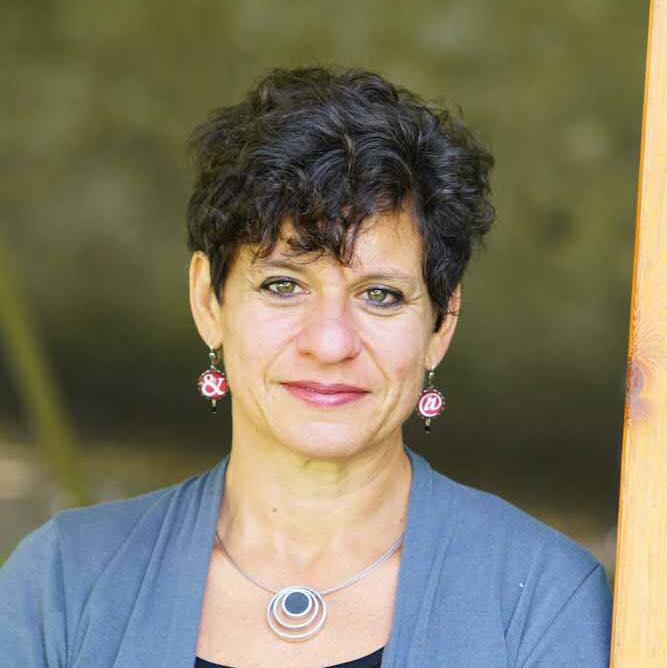
We're building on 127 years of independent journalism to help you develop deeper connections to what it means to be Jewish today.
With so much at stake for the Jewish people right now — war, rising antisemitism, a high-stakes U.S. presidential election — American Jews depend on the Forward's perspective, integrity and courage.
— Jodi Rudoren, Editor-in-Chief






